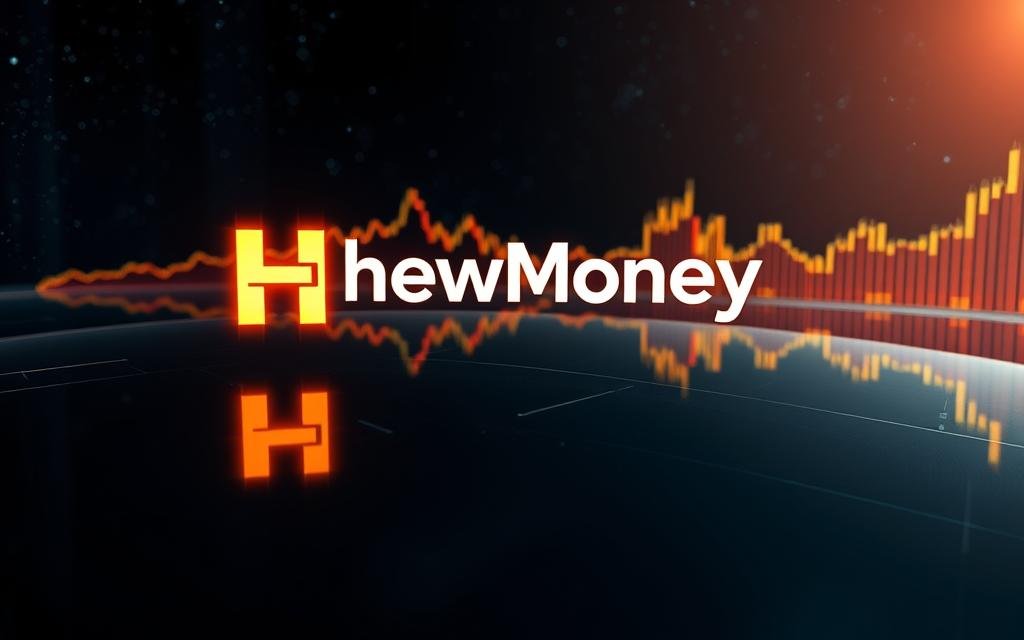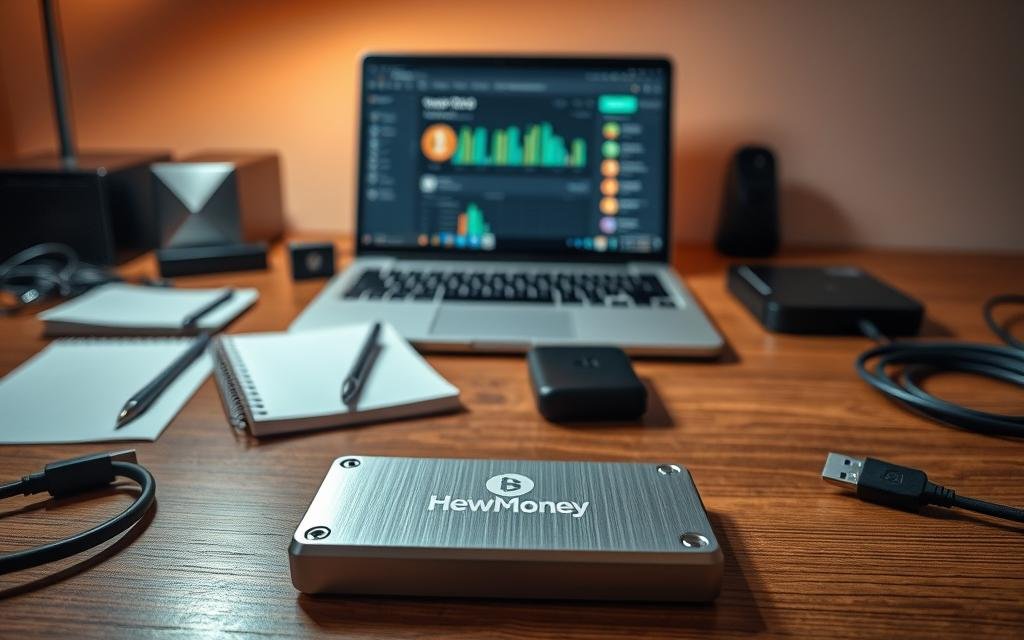Digital currencies have transformed the way we think about money and transactions. With innovations like blockchain technology, the financial landscape is evolving rapidly. This guide dives into the latest trends, helping you understand the opportunities and challenges in this dynamic market.
Regulated products, such as ETFs, offer a transparent way to engage with digital assets. These tools function similarly to traditional stocks and funds, making them accessible to a wide range of investors. By exploring real-world examples, like Schwab’s offerings, we’ll highlight how these products can fit into your financial strategy.
From understanding blockchain’s role to navigating market volatility, this guide provides step-by-step insights. Whether you’re new to digital currencies or looking to deepen your knowledge, we’ll cover the essentials to help you make informed decisions.
Key Takeaways
- Digital currencies are reshaping the financial world with innovative technology.
- Blockchain ensures secure and transparent transactions.
- ETFs provide a regulated way to invest in digital assets.
- Market trends highlight both opportunities and risks.
- Real-world examples, like Schwab’s offerings, showcase accessibility.
Understanding Cryptocurrency & Bitcoin Investments
The rise of digital assets has reshaped global financial systems, offering new ways to exchange value. These assets operate on decentralized networks, bypassing traditional banking systems. This innovation has opened doors to faster, more secure transactions.
What Defines Cryptocurrency and Bitcoin?
Digital currencies are built on blockchain technology, a secure and transparent ledger. Bitcoin, the first and most well-known, paved the way for others. Unlike traditional money, these assets are not controlled by any central authority.

Blockchain ensures every transaction is recorded and verified. This system reduces the risk of fraud and enhances security. It’s a revolutionary approach to managing financial data.
Key Features and Benefits
One of the standout features is encryption, which protects user data. Transactions are fast and often cost less than traditional methods. This makes digital currencies an attractive option for many.
Another benefit is the reduced reliance on central banks. Users have more control over their assets. This decentralization is a key selling point for investors.
“Blockchain technology is not just a trend; it’s the future of secure financial transactions.”
However, the market is known for its volatility. Prices can fluctuate dramatically in a short time. This poses risks but also opportunities for growth.
Emerging products like ETFs provide easier access to the market. They offer a regulated way to invest in digital assets. This has made the space more accessible to a wider audience.
In summary, digital currencies offer a mix of innovation, security, and potential. While risks exist, the benefits make them a compelling option for modern investors.
Introduction to the Crypto Market
Global interest in decentralized finance has surged, marking a new era for financial systems. The crypto market continues to grow, driven by innovation and widespread adoption. Recent trends show significant milestones, such as Bitcoin reaching new price highs and the introduction of ETFs in the U.S. market.

Overview of Digital Currency Trends
Digital assets have seen remarkable growth, with Bitcoin surpassing $100,000 for the first time in December 2024. This milestone reflects increasing investor confidence and demand. The market’s volatility, while a risk, also presents opportunities for those willing to navigate its fluctuations.
Blockchain technology remains the backbone of this ecosystem. Its secure and transparent ledger system ensures trust in every transaction. This innovation has not only revolutionized finance but also influenced traditional markets.
“The future of finance lies in decentralized systems, where technology empowers individuals.”
Regulatory updates, such as the SEC’s approval of Bitcoin ETFs, have further legitimized the space. These products provide a regulated way for investors to engage with digital assets. They also bridge the gap between traditional finance and the crypto world.
Global factors, like economic uncertainty and technological advancements, continue to shape the market. As adoption grows worldwide, the crypto space is becoming a key player in the global economy. Whether for speculative gains or long-term strategies, digital assets are here to stay.
Exploring Bitcoin and Other Digital Assets
The world of digital assets extends far beyond Bitcoin, offering a diverse range of opportunities. While Bitcoin remains the most recognized, altcoins like Ethereum, Solana, and Cardano have gained significant traction. These assets leverage blockchain technology to provide unique features, such as smart contracts and faster transactions.

Each digital asset operates differently. For example, Ethereum focuses on decentralized applications, while Solana emphasizes speed and low costs. These differences make them appealing to various investors and use cases. Understanding these nuances is key to making informed decisions.
Price fluctuations are a common trait across all digital assets. However, altcoins often experience more volatility than Bitcoin. This can lead to higher risks but also greater potential rewards. Recent market data shows that altcoins like Ethereum have outperformed Bitcoin in certain periods, highlighting their growth potential.
“Diversifying your portfolio with a mix of digital assets can help balance risk and reward.”
Innovation is a driving force behind these assets. From stablecoins pegged to the U.S. dollar to NFTs representing unique digital items, the possibilities are endless. These innovations differentiate digital assets from traditional investments like stocks and bonds.
However, challenges remain. Market fragmentation and regulatory uncertainties can make it difficult to evaluate the potential of these assets. Despite these hurdles, the increasing interest in diversified crypto portfolios reflects their growing importance in the financial world.
How to Safely Navigate the Crypto Investment Process
Navigating the world of digital assets requires a focus on security and risk management. With the growing popularity of blockchain-based systems, ensuring the safety of your investments is more important than ever. This section provides practical steps to help you protect your assets and make informed decisions.

Setting Up a Secure Crypto Wallet
Your wallet is the foundation of your digital asset security. Start by choosing a reputable wallet provider, such as Ledger or Trezor. These hardware wallets offer cold storage, which keeps your assets offline and safe from online threats.
Enable multi-factor authentication (MFA) for an added layer of protection. This ensures that even if your password is compromised, unauthorized access is blocked. Regularly update your wallet software to benefit from the latest security features.
“A secure wallet is your first line of defense in the digital asset space.”
Managing Risks and Transaction Security
Understanding potential risks is crucial. Always verify transaction details before confirming. Use blockchain records to monitor and verify every transaction. This transparency helps prevent fraud and ensures accuracy.
Stay updated on regulatory changes, such as the U.S. Infrastructure Investment and Jobs Act. These updates can impact how you manage your assets. Reputable platforms like Schwab provide tools to help you stay compliant and secure.
- Use cold storage for long-term asset protection.
- Enable MFA to safeguard your accounts.
- Monitor transactions using blockchain records.
- Stay informed about regulatory updates.
By following these steps, you can minimize risks and build confidence in your digital asset investments. Remember, security is not just a feature—it’s a necessity.
Blockchain Technology and Its Impact on Investing
Blockchain technology is revolutionizing how we track and secure financial transactions. At its core, blockchain is a decentralized ledger that records data in a way that is transparent and immutable. This means once information is added, it cannot be altered, ensuring trust and accuracy.

The Basics of Blockchain
Blockchain operates on a network of computers, known as nodes, that work together to validate and record transactions. Unlike traditional systems, there is no central authority. This decentralization reduces the risk of fraud and enhances security.
Every transaction is grouped into a block and linked to the previous one, forming a chain. This structure ensures that all records are permanent and tamper-proof. It’s a game-changer for industries relying on data integrity.
“Blockchain’s decentralized nature ensures transparency and trust in every transaction.”
Applications in Financial Markets
Blockchain is not just for digital assets. It’s transforming traditional financial markets by enabling faster and cheaper transactions. For example, cross-border payments that once took days can now be completed in minutes.
In asset management, blockchain provides a secure way to track ownership and transfer of assets. This reduces paperwork and minimizes errors. Real-world examples include platforms like Schwab, which are integrating blockchain to improve efficiency.
Comparing Blockchain and Traditional Systems
| Aspect | Blockchain | Traditional Systems |
|---|---|---|
| Security | High (immutable ledger) | Moderate (centralized control) |
| Speed | Fast (real-time updates) | Slow (manual processing) |
| Cost | Low (automated processes) | High (middlemen fees) |
Blockchain’s ability to reduce costs and improve speed is reshaping investment strategies. Investors now have access to tools that were once reserved for large institutions. This democratization of finance is one of blockchain’s most significant contributions.
As technology advances, blockchain’s role in the financial world will only grow. From reducing fraud to enhancing transparency, it’s paving the way for a more secure and efficient future.
Market Trends, Volatility and Investment Strategies
The crypto market is a dynamic space, shaped by rapid price shifts and evolving investor strategies. Understanding these trends is key to navigating its complexities. Recent data shows that digital assets like Bitcoin have experienced significant price fluctuations, influenced by global events and technological advancements.

Understanding Price Fluctuations
Price movements in the crypto market are often driven by supply and demand. For example, Bitcoin’s halving events, which reduce mining rewards, have historically led to price surges. However, external factors like regulatory changes or economic uncertainty can also impact asset values.
Volatility is a hallmark of this market. While it presents risks, it also offers opportunities for those who can adapt quickly. Tools like the Bitcoin Volatility Index (BVIX) help investors gauge expected price swings and make informed decisions.
Evaluating Market Sentiment and Risk
Investor sentiment plays a crucial role in shaping market trends. Positive news, such as the approval of Bitcoin ETFs, can boost confidence, while negative events may lead to sell-offs. Staying informed about these factors is essential for managing risk.
Diversification is a proven strategy for mitigating volatility. By spreading investments across different assets, investors can reduce exposure to sudden price drops. ETFs, for instance, provide a regulated way to gain exposure to the crypto market without holding individual assets.
“Adapting to market changes requires a balance of research, strategy, and patience.”
Technological advancements, like real-time blockchain data, also enhance market analysis. These tools allow investors to track trends and make timely decisions. By combining these resources with a long-term perspective, investors can navigate the crypto market’s ups and downs more effectively.
Step-by-Step Guide to Crypto Transactions and Tax Implications
Understanding the tax implications of digital asset transactions is essential for every investor. The IRS treats these assets as property, meaning every sale or exchange triggers a taxable event. This section breaks down the rules and provides practical tips to help you stay compliant.
Navigating U.S. Tax Rules for Digital Assets
In the U.S., digital assets are subject to capital gains tax. If you sell or exchange an asset, you must report the transaction on your tax return. Short-term gains apply if you held the asset for less than a year, while long-term gains apply for holdings over a year.
The IRS requires detailed records of every transaction. This includes the date, value, and purpose of each exchange. Keeping accurate records ensures you can calculate gains or losses correctly and avoid penalties.
“Proper record-keeping is the key to navigating crypto taxes successfully.”
Tax Differences: Physical Assets vs. ETFs
Holding physical assets like Bitcoin differs from investing in ETFs. With physical assets, every sale or exchange is a taxable event. ETFs, however, are treated like traditional stocks, simplifying tax reporting for many investors.
For example, selling Bitcoin triggers a capital gains tax, while selling ETF shares may result in similar tax implications but with easier tracking. Understanding these differences can help you choose the right investment strategy.
Practical Tips for Compliance
- Use secure wallets to store transaction records.
- Consult a tax advisor familiar with digital assets.
- Stay updated on IRS guidelines and regulatory changes.
- Use tax software to automate calculations and reporting.
By following these steps, you can minimize risks and ensure compliance with U.S. tax laws. Remember, staying informed is your best defense against unexpected tax liabilities.
Capital Gains Tax Rates for 2024
| Filing Status | Short-Term Rates | Long-Term Rates |
|---|---|---|
| Single | 10% – 37% | 0% – 20% |
| Married Filing Jointly | 10% – 37% | 0% – 20% |
Understanding these rates can help you plan your transactions and maximize tax benefits. Whether you’re a seasoned investor or new to digital assets, staying compliant is crucial for long-term success.
Utilizing ETFs and Diversification in Your Portfolio
Exchange-traded funds (ETFs) have become a popular tool for managing exposure to digital assets. These products offer a regulated and accessible way to invest in the evolving crypto market. By incorporating ETFs into your portfolio, you can simplify the complexities of direct investments while maintaining a balanced strategy.
An Overview of Spot Bitcoin ETFs
Spot Bitcoin ETFs hold actual bitcoin, unlike futures-based ETFs that track price movements through derivatives. This distinction ensures that investors gain direct exposure to the asset’s value. The SEC approved the first spot Bitcoin ETFs in January 2024, marking a significant milestone for the U.S. market.
These ETFs provide several advantages. They eliminate the need for managing a crypto wallet, reducing the risk of losing access to your assets. Additionally, they can be traded through traditional brokerage accounts, making them accessible to a wider range of investors.
“Spot Bitcoin ETFs bridge the gap between traditional finance and the digital asset space, offering a secure and regulated investment option.”
Benefits of Diversification Through ETFs
Diversification is a key strategy for managing risk in any portfolio. By investing in ETFs, you can spread your exposure across multiple assets, reducing the impact of volatility. For example, Schwab’s ETF offerings allow investors to gain exposure to bitcoin without the complexities of direct ownership.
Here are some key benefits of using ETFs for diversification:
- Reduced Risk: ETFs spread investments across multiple assets, minimizing the impact of price swings.
- Enhanced Liquidity: ETFs can be bought and sold like stocks, providing flexibility in trading.
- Simplified Trading: No need to manage a crypto wallet or navigate complex exchanges.
Strategic Insights for Investors
Incorporating digital asset ETFs into your portfolio requires careful planning. Start by assessing your risk tolerance and investment goals. A common recommendation is to allocate between 1% to 10% of your portfolio to digital assets, depending on your comfort level with volatility.
ETFs also offer ease of use. With no account minimums and low trading commissions, they are an attractive option for both new and experienced investors. By leveraging these products, you can navigate the crypto market with confidence and clarity.
Leveraging Technology and Security for Better Investments
Advanced technology is reshaping how we approach digital asset investments, offering new levels of security and efficiency. From real-time data analytics to robust cybersecurity measures, these innovations are transforming the way investors engage with the market.
One of the most significant advancements is the use of blockchain technology. This decentralized ledger ensures transparency and immutability, reducing the risk of fraud. Platforms like Schwab are integrating blockchain to enhance efficiency and trust in financial transactions.
Cybersecurity is another critical aspect. Measures like encryption and multi-factor authentication (MFA) protect digital assets from unauthorized access. For example, hardware wallets like Ledger and Trezor use cold storage to keep assets offline and secure.
“Investing in technology and security is not just an option—it’s a necessity for safeguarding your digital assets.”
Here are some key tools and strategies to enhance your investment approach:
- Real-Time Data Analytics: Platforms use blockchain records to provide up-to-date market insights, helping investors make informed decisions.
- Secure Exchanges: Reputable exchanges implement advanced security protocols to protect user accounts and transactions.
- Emerging Technologies: Innovations like smart contracts and decentralized finance (DeFi) are streamlining transactions and lowering costs.
Companies are also investing in technology to reduce fraud and enhance investor safety. For instance, Schwab’s integration of blockchain into its systems has improved transparency and reduced errors in asset management.
By leveraging these tools, investors can navigate the market with confidence. Whether you’re using secure wallets or exploring ETFs, technology is making digital asset investments more accessible and secure.
In conclusion, the combination of advanced technology and robust security measures is revolutionizing the investment landscape. By staying informed and utilizing these innovations, you can protect your assets and make smarter investment decisions.
Conclusion
As the financial landscape evolves, staying informed about digital assets is more crucial than ever. This guide has highlighted the importance of understanding bitcoin and other digital currencies, emphasizing secure practices and leveraging technology to protect your investments.
While the market’s volatility can pose risks, informed strategies can help mitigate these challenges. Tools like ETFs and secure wallets provide accessible and regulated ways to engage with this space. Always stay updated on regulatory changes and market trends to make smarter decisions.
Remember, consulting a professional advisor can provide personalized guidance tailored to your goals. Thank you for exploring these expert insights. The future of digital currency holds immense potential, and with the right knowledge, you can navigate it confidently.
FAQ
What defines cryptocurrency and Bitcoin?
Cryptocurrency is a type of digital currency that uses blockchain technology for secure transactions. Bitcoin, the first and most well-known, operates on a decentralized network without a central authority.
What are the key features and benefits of investing in digital assets?
Digital assets like Bitcoin offer decentralization, transparency, and potential for high returns. They also provide a hedge against traditional market volatility and inflation.
How can I set up a secure crypto wallet?
Choose a reputable wallet provider, enable two-factor authentication, and store your private keys offline. Hardware wallets are often recommended for added security.
What should I know about managing risks in crypto transactions?
Always verify transaction details, use secure networks, and avoid sharing sensitive information. Diversifying your portfolio can also help mitigate risks.
How does blockchain technology impact investing?
Blockchain ensures transparency, reduces fraud, and speeds up transactions. It’s the backbone of digital assets, making them more secure and efficient.
Why does the price of digital assets fluctuate so much?
Prices are influenced by market demand, news, regulations, and investor sentiment. Volatility is common in this emerging market.
What are the U.S. tax rules for digital assets?
The IRS treats digital assets as property, meaning transactions are subject to capital gains tax. Keep detailed records of all transactions for accurate reporting.
What are spot Bitcoin ETFs, and how do they work?
Spot Bitcoin ETFs track the price of Bitcoin directly, allowing investors to gain exposure without owning the asset. They’re traded on traditional exchanges like stocks.
How can technology improve my investment strategy?
Tools like automated trading bots, analytics platforms, and secure wallets can enhance decision-making and protect your assets.
What’s the best way to diversify my crypto portfolio?
Invest in a mix of established assets like Bitcoin and Ethereum, along with promising altcoins. Consider ETFs or funds for broader exposure.

